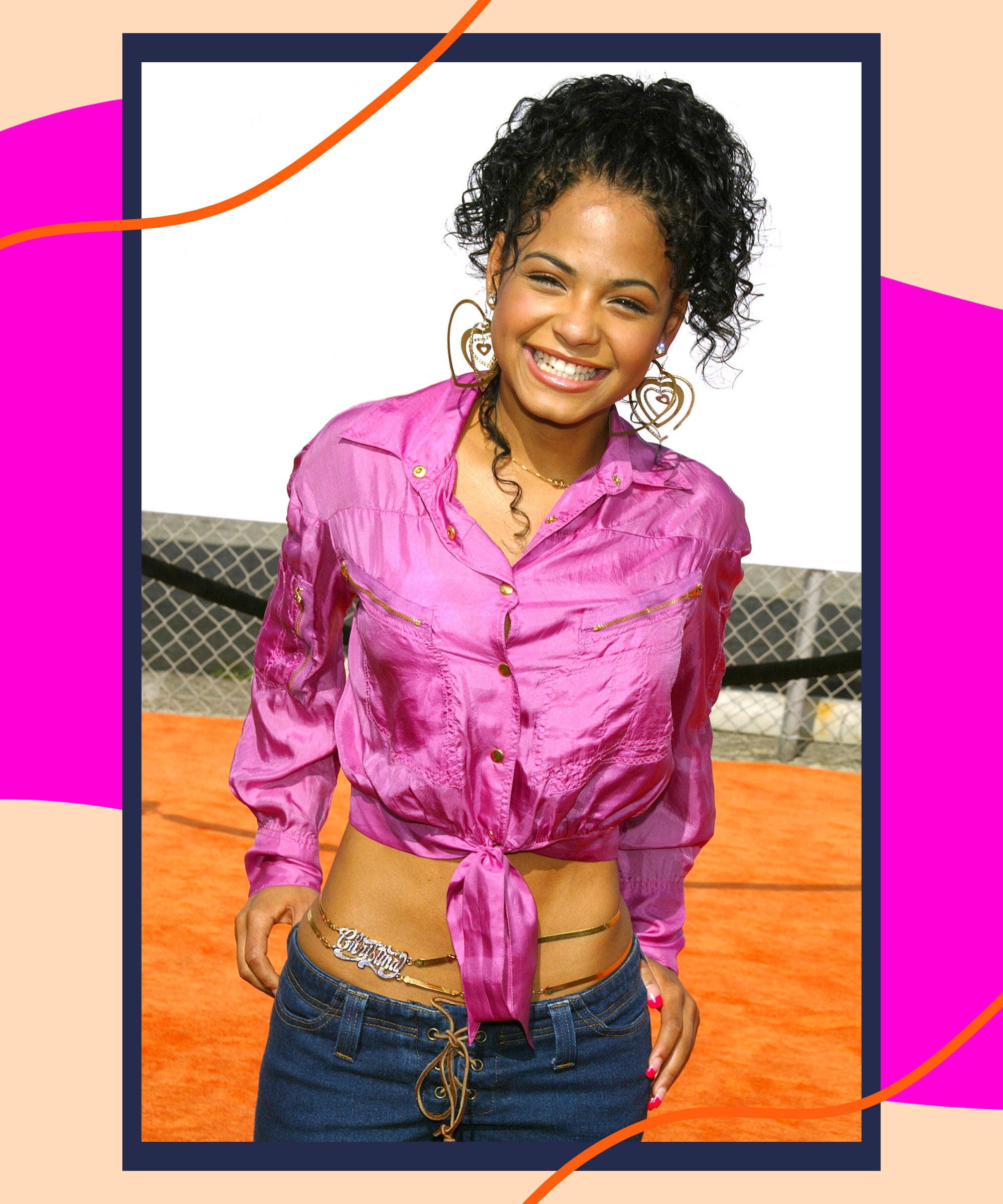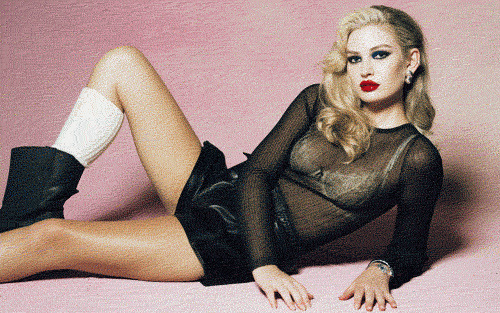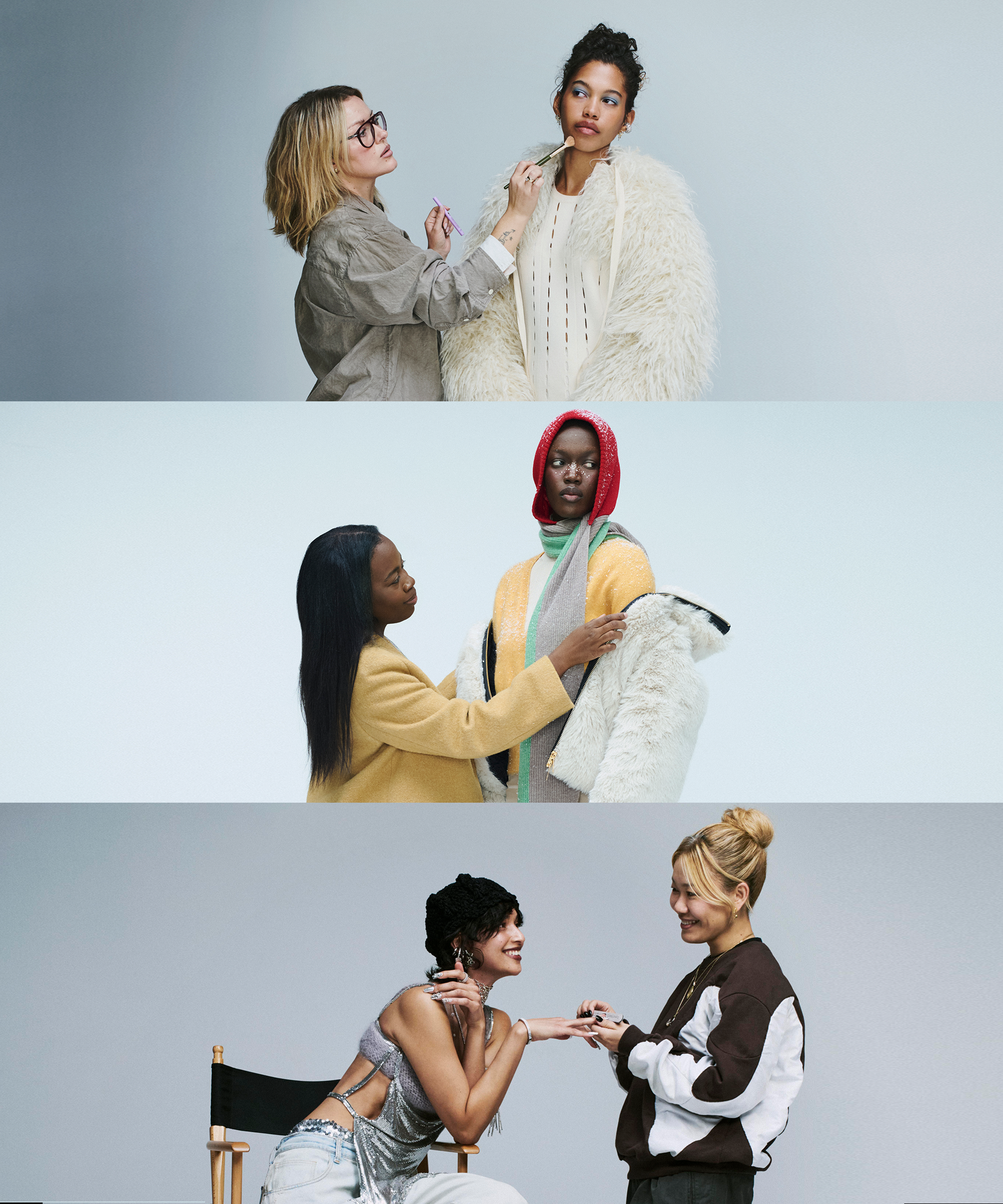
When Carrie Bradshaw (Sarah Jessica Parker) wore a lime green belt cinched high around her upper abdomen with a low-waisted tropical-print skirt, a pink midriff-baring button-down, and a tumbleweed-inspired headpiece in Sex and the City (Season 4, Episode 15), viewers’ brows furrowed. Even for Carrie — whose best-known outfits include a Kermit green mini skirt with a bustle and a bandeau bra paired with a cowboy hat — wearing something as utilitarian as a belt in a way that serves zero physical purpose is questionable at best.
Even SATC costume designer Patricia Field was thrown off by the look — and she created it. “The show ran for six years and there were about 24 episodes a season, so that’s a lot of outfits, but I only have one where I look at it and say, ‘Eh,’” she told Repeller in 2018. “She was wearing a skirt and a crop top, and I threw a belt around her… waist.”
What’s more puzzling about the look, though, is the fact that 20 years after Carrie’s choice of waist accessory left millions scratching their heads, people are now seemingly warming up to the idea of wearing belts, not to keep their pants up, but rather as a device to make their outfit look pretty or otherwise eye-catching. For one reason or another, unnecessary belts are indeed a trend in 2021.
In July, Olivia Rodrigo headed to the White House to convince her fellow members of Gen Z that the vaccine is “Good 4 U.” For the occasion, she wore a pink plaid skirt suit from Chanel’s spring ‘95 collection, paired with white Giuseppe Zanotti platforms and a silver Chanel chain belt that was attached to nothing at all. In the days following her national TV appearance, global fashion shopping platform Lyst reported a 121% week-over-week surge in searches for look-alike waist ornaments.
In a similar fashion, Hailey Bieber, Bella Hadid, and Lady Gaga paired no-work-and-all-play belly chains and belts with bikinis this summer, while Beyoncé, Bella Hadid, and Kim Kardashian styled theirs with ready-to-wear. On catwalks, more waist baubles appeared at Blumarine, Jacquemus, Chanel, and Dior. Though styled in different ways, all of the above have one thing in common: their belts, like Carrie’s, did nothing in the way of holding anything up. In fact, they served no utilitarian purpose at all.
We couldn’t help but wonder: What does it say about the world that something as purposeful as a belt is now being worn as a garnish, comparable to a cocktail ring or a string of pearls? And how does fashion’s current interest in the trend tie back to Carrie’s look in 2001, as well as those worn by Christina Milian, Beyoncé, and more during Y2K?
According to Dr. Carolyn Mair, a cognitive psychologist who specializes in fashion, we’re currently experiencing a similar zeitgeist to the early aughts, which was marked by fear of unknown advances in tech, global economic and political problems, and terrorism. Those fears remain present today, but with the added stressors of a pandemic. “With fear comes excitement — fear agitates,” Mair tells Refinery29. She says that in such instances, there are three reactions: stay and fight, run away, or simply stay the same, ignoring the realities in front of you. “Fashion doesn’t stay the same, and fashion followers have decided to fight: to be seen and to go for every opportunity to be seen that comes their way.” In turn, stylish individuals during this time of upheaval have turned to over-the-top fashion — flashy belts included — even if their justification for wearing it is purely based on style.
Today, we’re “fighting” for something a bit different than we were in March 2020. Then, we dressed for our personal safety, wearing clothing that could protect us: masks, of course, but also stay-away-from-me shoulders and cumbersome boots that looked ready for the apocalypse. We carried big bags and our clothes featured even bigger pockets so that we had all possible necessities on us at any given time. Now, we’re pursuing the freedoms we got a taste of after lockdown restrictions ended in the U.S. and vaccines became readily available. Those freedoms include the liberty to wear whatever we please, without the need to consider safety when getting dressed.
“Some people are dressing more frivolously and in a more fun way as an expression of freedom and excitement at their newfound ability to socialize as they wish.”
Dr. Carolyn Mair, cognitive psychologist
Dr. Dawnn Karen, fashion psychologist and the author of Dress Your Best Life: How to Use Fashion Psychology to Take Your Look — and Your Life — to the Next Level, believes that unnecessary belts are directly tied to this. According to her, belts that only function as decor symbolize the freedom to wear things that 365-plus days ago, we couldn’t — or at least had no use for. Mair agrees: “Some people are dressing more frivolously and in a more fun way as an expression of freedom and excitement at their newfound ability to socialize as they wish.”
Karen also attributes the rise of wholly decorative trends like the unnecessary belt to that déjà vu feeling we’re all starting to get about the second wave of lockdowns. Because of the Delta variant, we’ve returned to a state of caution about the unknown. At any moment, we could be ushered back indoors. So why not dress to excess, flaunting our wildest and most extravagant ensembles, while we still can?

“We spent over a year never hearing a compliment,” she says, “of no one saying, ‘Oh, I love your blouse,’ or ‘Cute dress.’” Now that we’ve been able to experience those types of external affirmations again, it will be difficult to return to solitude. For that reason, Karen says that many are loading up on accessories, whether they serve a purpose or not, because, as scary as it sounds, “the clock is ticking.”
Other reasons for the resurrection of the unnecessary belt are more straightforward. Since the trend cycle dictates that styles come back en vogue every 20 years or so, the return of Y2K-era belts isn’t exactly surprising. Just in time for the two-decade mark, low-rise jeans, tube tops, trucker hats, belly chains, and more staples from the early aughts are experiencing a second wave in 2021.
But while we can blame the trend cycle for most of the aforementioned Y2K trends, there’s something more bewildering about an item as utilitarian and practical as a belt being worn for decorative purposes only. Then again, with the fear of another lockdown looming, maybe we should spend a little less time worrying about things as inconsequential as an aesthetically pleasing belt, and a little more time enacting whatever sartorial chaos makes getting dressed more enjoyable.
Like what you see? How about some more R29 goodness, right here?
6 Y2K Trends That Fashion Loves To Hate




